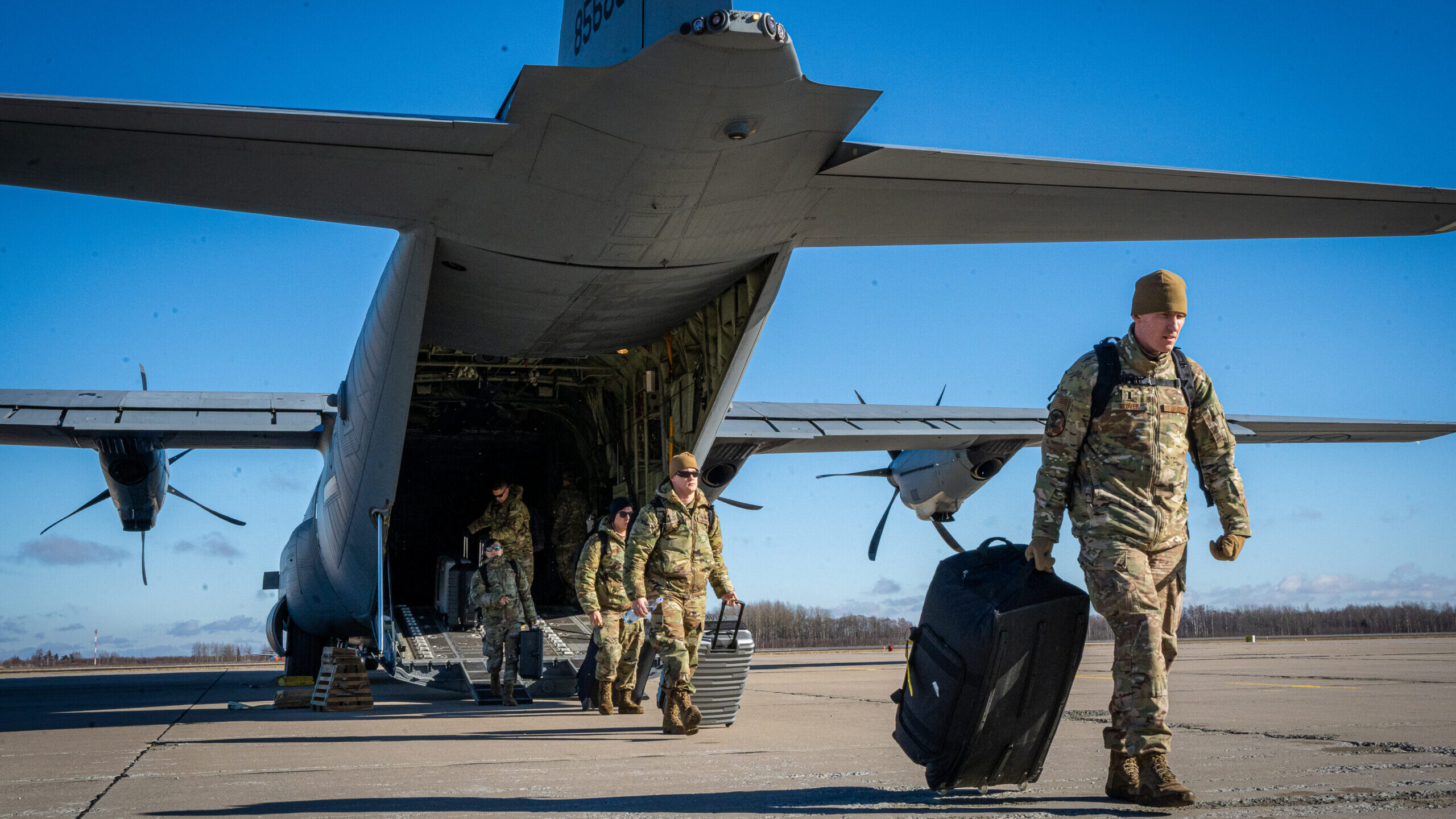
U.S. Air Force Airmen assigned to RAF Lakenheath, depart from Ramstein Air Base, Germany, C-130J Super Hercules in Lithuania, Feb. 27, 2022. (Staff Sgt. Jacob Wongwai/Air Force)
WASHINGTON: The chairman of the House Armed Services Committee said today that the fiscal 2023 defense budget will be “bigger than we thought” after Russia’s invasion of Ukraine prompted an urgent rethinking of US security strategy.
“Without question it’s going to have to be bigger than we thought. I mean, just the Russian invasion in Ukraine fundamentally altered what our national security posture, what our defense posture needs to be,” Rep. Adam Smith, D-Wash., said at the American Enterprise Institute. “It made it more complicated, and it made it more expensive. … The decision to invade Ukraine by Russia changes it and it’s gonna go up. There’s no doubt about it.”
Smith’s comments come as factions of the Democratic lawmakers in on Capitol Hill are pushing for reductions in overall defense spending. While Smith said he hadn’t settled on a topline number, the Biden administration is reportedly considering around $770 to $780 billion, already well above the $715 billion requested last year. At the event today, Smith said that the FY23 budget is “probably the most impactful and important budget that we’ve seen in the 25 years I’ve been in Congress.”
On Wednesday, the White House sent a letter to Congress asking for $10 billion for “additional humanitarian, security, and economic assistance for Ukraine and Central European partners” in response to Russia’s invasion of Ukraine. That money is part of a broader $32.5 billion supplemental spending package to address COVID-19.
Beyond the US, the invasion sparked several European countries to increase their defense spending, with Germany — a frequently target of former President Donald Trump for not spending 2% of its GDP on defense — kicking off a €100 billion ($110 billion) modernization of its military. Other nations signaling an increase in military spending include Italy, France and Poland.
Related: Why Turkey calling it ‘war’ in Ukraine matters for the Black Sea
As these countries begin to revamp their militaries in response to Russian aggression, Smith said the US must “take advantage” to strengthen partnerships in the region.
“As these militaries grow, we need to be in there training them, helping them and working together,” Smith said.
Meanwhile, Sweden and Finland have warmed to the idea of potentially joining NATO — a possibility that’s already drawn warnings from Russia.
In the last few weeks, the US has sent around 14,000 troops, including F-35s and Apache helicopters to reassure allies and bulk up the defenses of NATO’s eastern flank. At a hearing earlier this week, a top Pentagon official told Congress that it was considering changes to the number of troops the US has in Europe “both in the near term and frankly, and in the long term,” according to Defense News.
While the Pentagon has primarily focused in recent years on a pivot to the Indo-Pacific, the invasion of Ukraine serves as a stark reminder of the Russian military threat in Europe. Smith said that the US government must strike a balance on support for Eastern Europe while providing adequate resources for the Indo-Pacific region.
“Posture-wise, yes, we’re going to need to do more in Eastern Europe,” Smith said. “I don’t think we can forget about Asia because the presence does matter so I think we’re going to need to balance those two things. As far as cost is concerned, I come back to we got to get more out of the money we spend so that we can do it.”
Army eyes TBI monitoring, wearable tech for soldiers in high-risk billets
“We are also looking at what additional personal protective equipment we can provide to our folks, especially instructors and others who are routinely exposed to blast pressure,” said Army Secretary Christine Wormuth.


























